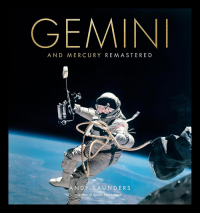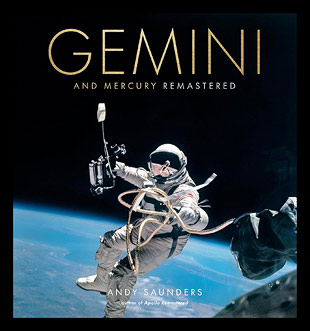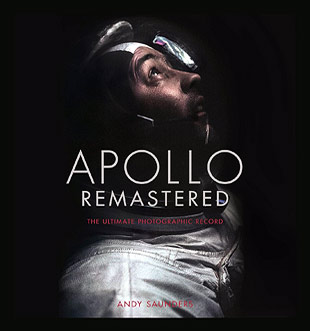Saunders is a well known British author and science writer, and he’s also become a leading expert in the digital restoration of historic NASA photographs. For example, for the 50th anniversary of the Apollo 11 mission in 2019, he produced the best image of astronaut Neil Armstrong on the surface of the Moon by stacking frames from 16mm film. In 2021, he also managed to locate Alan Shepard’s famous golf balls on the Moon (in similarly stacked film images taken during the Apollo 14 mission) revealing that his best shot traveled about 40 yards. Additional image analysis by Saunders that same year also helped to vindicate astronaut Gus Grissom in the 1961 sinking of his Liberty Bell 7 Mercury spacecraft during recovery operations. (Saunders is also quite a good bloke, as I’ve learned from chatting with him online.)
But one doesn’t simply start down the road of NASA image restoration and then turn back; after succeeding in pulling out more detail in several of the shots he attempted to restore, Saunders decided to explore the entire back catalog of NASA spaceflight imagery. And as it happened—in conjunction with the 50th anniversary of Apollo 11—NASA had just taken all of the original flight negatives (shot by the Apollo astronauts on the Moon) out of cold storage and rescanned them in very high resolution, up to 200 pixels/mm at 14 bits, in order to preserve all of the color and grayscale detail available in the negatives. (Each image is about 11,000 by 11,000 pixels, with file sizes of 1-2 GB each.)
So Saunders set out to assess all 35,000 pieces of original film taken during the Mercury, Gemini, and Apollo missions, including every frame of 16mm film footage, the Hasselblad still imagery, the Panoramic camera imagery—literally everything. And having produced a catalog of suitable candidate imagery and completing his restoration work, he decided to compile the result of his efforts in book form. The result in 2022 was Apollo Remastered: The Ultimate Photographic Record. And now, he’s followed it with Gemini and Mercury Remastered.
Now, I came late to the party on Apollo Remastered. I considered picking the book up when it was first published, but the retail price was substantial—$75. And I have an entire bookcase full of the very best hardcovers on NASA’s Moon missions, including several books of photography. So it was only natural to wonder, “What difference could there possibly be in yet another one?”
But seeing that there was a new volume on the Mercury and Gemini missions about to be released, I noticed that the Apollo book happened to be on sale leading up to my birthday earlier this month. So I figured: What the heck—why not give it a try? Well, let me tell you… when Apollo Remastered finally arrived, I quickly realized exactly how wrong I’d been to doubt the difference! And I pre-ordered the Gemini book on the spot.
Here’s the thing you need to know: About half of each book is composed of spaceflight images you’re no doubt familiar with if you’re a fan of the topic, having seen them for most of your life. But all of those images you’ve seen in the past have been much older scans, produced by the best equipment available in the 1960s and 70s, and many of them are copies of copies. Whereas the images here are high resolution scans of the original camera negatives, restored and remastered with the state of the art in digital image processing software available today. So you have absolutely never seen them looking this good. Here are some examples, with the original shots on the left and the new restored images on the right…
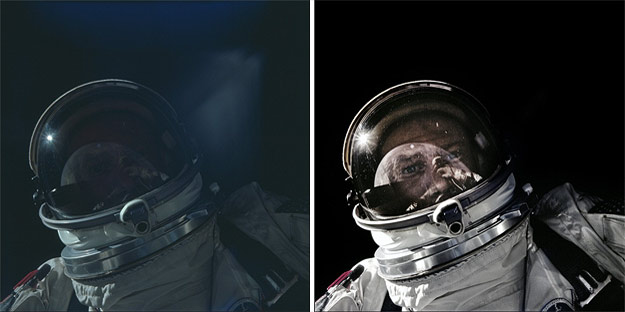
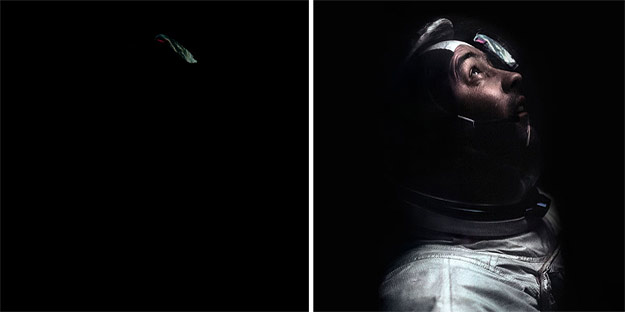
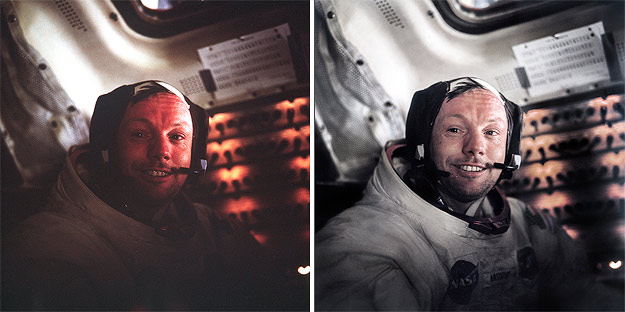
The rest of these images are pictures that most of you will never have seen before, simply because they were considered badly shot, out of focus, poorly exposed, etc. Essentially, NASA’s photo experts back in the day looked at these shots on the negs and basically considered them discards. But with today’s scanning, processing, and remastering technology, it’s finally possible to bring out the detail that was always there, but that no one has ever seen before.
A technique that was particularly useful is something called stacking, which will be familiar to anyone who’s tried their hand at astrophotography. Essentially, you take hundreds of shots of the same subject and stack the images digitally to enhance the overall detail—detail that you can’t see in any single shot, but which becomes more obvious the more actual data you have to process. So the 16mm film footage that was shot during the missions is an excellent source for creating new remastered still images that are more detailed than anything you can see in the film footage. Here is an example of this technique…
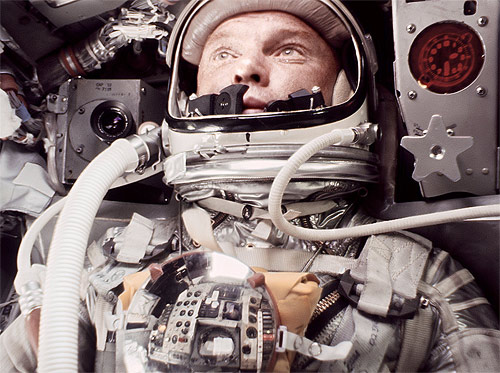
The result of all this work is truly shocking when you see it up close. Paging through this book, one can almost imagine that you’re there in the spacecraft with the astronauts, there with them as they look out the windows, and there with them as they walk on the Moon’s surface. There is a truly astonishing amount of detail and depth visible in each image. And the images go from up close and intimate shots taken inside the cramped Apollo Command Module and Lunar Module, as well as the even more cramped Mercury and Gemini capsules, to epic shots of the Earth and Moon seen from orbit, to even more epic shots taken on the surface of the Moon. And when you see these shots, including a number of truly stunning panoramic images, the sheer scale of what you’re seeing is remarkable. And it’s not something that you can fully appreciate in a lower resolution digital image like the kind I can show you here—you really have to see them printed in very high quality on the page to fully appreciate them.
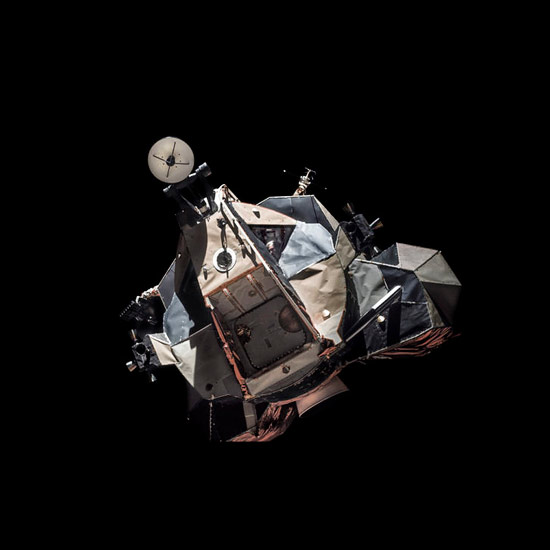
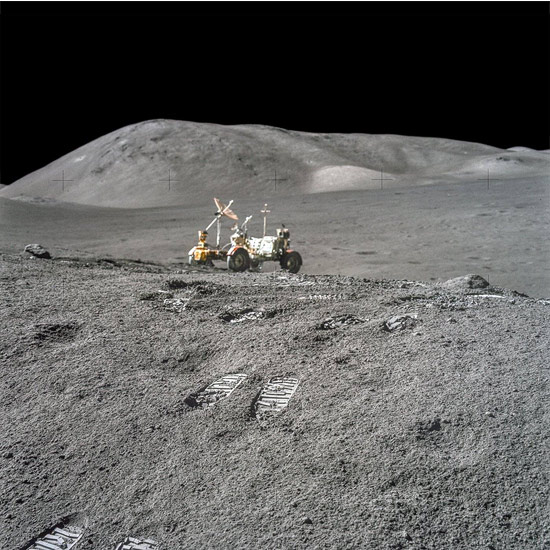
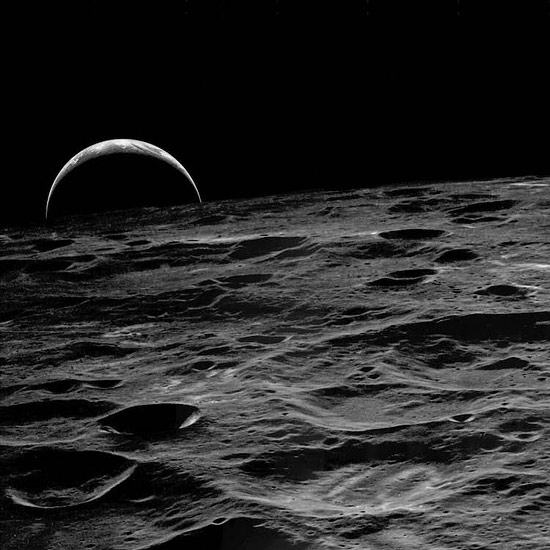
Honestly, I’ve never seen anything like this before, in all my 58 years of passion for human spaceflight. The closest thing I can think of that approximates the experience of paging through these books is going to see one of the great IMAX documentaries that have been made over the years, like Todd Douglas Miller’s terrific Apollo 11 film.
It’s often been said that the greatest treasure NASA brought back from the Moon were the photographs the astronauts took during the missions. And I’ve never believed that more strongly than I do now. These pictures are truly remarkable. You can see the awe and wonder on the astronauts’ faces. You can see the hint of tears in Neil Armstrong’s eyes after having just walked on the Moon with Buzz Aldrin. You can see the tiniest bits of dust crumbling in a lunar footstep, then the Lunar Module itself being absolutely dwarfed by the mountains surrounding its Taurus-Littrow landing site.
These images are a joy. They give me chills every time I look at them.
I cannot possibly recommend Andy Saunders’ Apollo Remastered and Gemini and Mercury Remastered more highly. Find them on sale if you must, but even at full cover price they are worth every penny. I’m very happy that I purchased them indeed.
Here are the links to the Amazon US order pages for each (click here and here)…
You can also find them on Amazon UK here and here.
My personal thanks to Saunders for providing us all with a remarkable service in restoring this imagery—I’ve enjoyed every single shot. Thanks also to the astronauts who took them, to NASA for preserving them, and to the publishers who supported Saunders’ efforts. You can visit his website here: apolloremastered.com
Go boldly!
- Bill Hunt
(You can follow Bill on social media on Twitter, BlueSky, and Facebook, and also here on Patreon)


